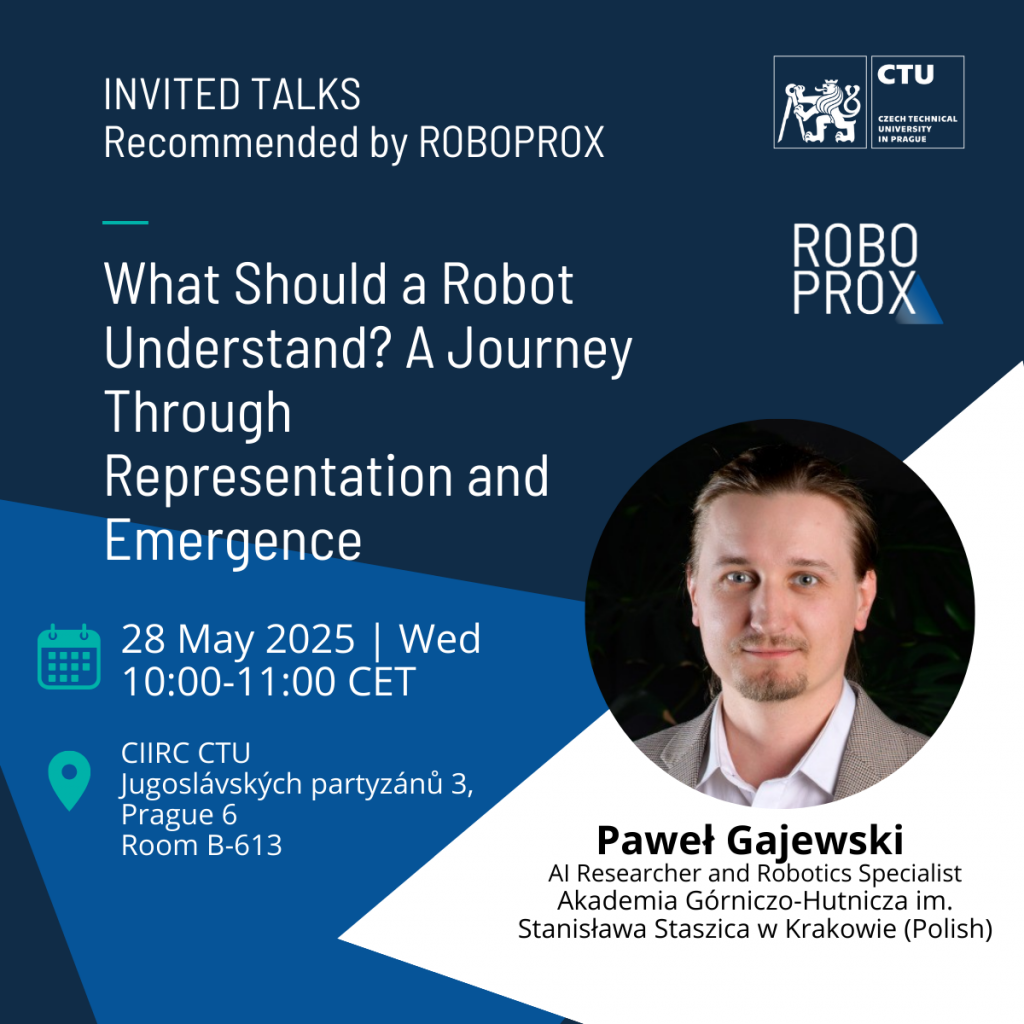Within the ROBOPROX Project, we would like to invite you to an upcoming guest lecture by Paweł Gajewski, AI researcher and robotics specialist with a background in autonomous and adaptive systems. His talk, titled “What Should a Robot Understand? A Journey Through Representation and Emergence,” will explore key questions at the intersection of symbolic reasoning, machine learning, and robotics, offering a unique perspective shaped by his academic and industry experience.

28 May 2025, 10:00-11:00 CET
CIIRC CTU
Jugoslávských partyzánů 3, Prague 6 | Room B-613
Abstract
This talk reflects on my PhD journey exploring how robots can generalize to new situations—through analogy, structured knowledge, reinforcement learning, and affordance discovery. From symbolic representations to feature-based interactions, I sought ways for robots to adapt and reuse skills. Today, as we turn to emergent behavior in large models, these earlier insights remain relevant. I’ll share key lessons on what robots should understand—and how that understanding might arise.
About the Speaker
Pawel Gajewski is an AI researcher and robotics specialist whose work bridges theoretical exploration and practical application. His academic journey began with a fascination for autonomous and adaptive systems, culminating in a Ph.D. from AGH University of Krakow, where he explored creative skill use in robots. His doctoral work—carried out in collaboration with Universität Bremen and the University of Aberdeen—focused on robotic skill adaptation and concept learning from demonstration, which evolved into research on affordance discovery. Pawel’s interests span reinforcement learning, deep neural networks, and biologically plausible learning systems. He has applied these methods in industrial and robotic contexts and has also contributed as a teacher and supervisor in computer vision research at AGH University. He has also worked as an AI Scientist, Software Architect, and IT Consultant for companies in Poland, Denmark, and Sweden.
